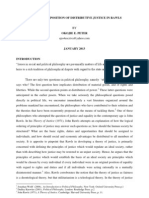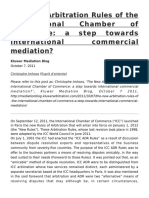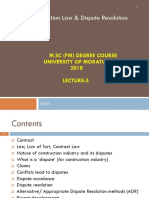0% found this document useful (0 votes)
9 views20 pagesModule 4 Jurisprudence Legato Notes
The document discusses the concept of justice in democratic systems, highlighting its various interpretations and major concepts, including social, economic, political, and legal justice. It explores different theories of justice from philosophers like Plato, John Stuart Mill, Nozick, and John Rawls, as well as Indian perspectives on justice, including views from Gandhi and Amartya Sen. Additionally, it examines the administration of justice, types of justice, and theories of punishment, emphasizing the importance of fairness and equality in legal frameworks.
Uploaded by
georgejoseph7062Copyright
© © All Rights Reserved
We take content rights seriously. If you suspect this is your content, claim it here.
Available Formats
Download as PDF, TXT or read online on Scribd
0% found this document useful (0 votes)
9 views20 pagesModule 4 Jurisprudence Legato Notes
The document discusses the concept of justice in democratic systems, highlighting its various interpretations and major concepts, including social, economic, political, and legal justice. It explores different theories of justice from philosophers like Plato, John Stuart Mill, Nozick, and John Rawls, as well as Indian perspectives on justice, including views from Gandhi and Amartya Sen. Additionally, it examines the administration of justice, types of justice, and theories of punishment, emphasizing the importance of fairness and equality in legal frameworks.
Uploaded by
georgejoseph7062Copyright
© © All Rights Reserved
We take content rights seriously. If you suspect this is your content, claim it here.
Available Formats
Download as PDF, TXT or read online on Scribd
/ 20













































































































